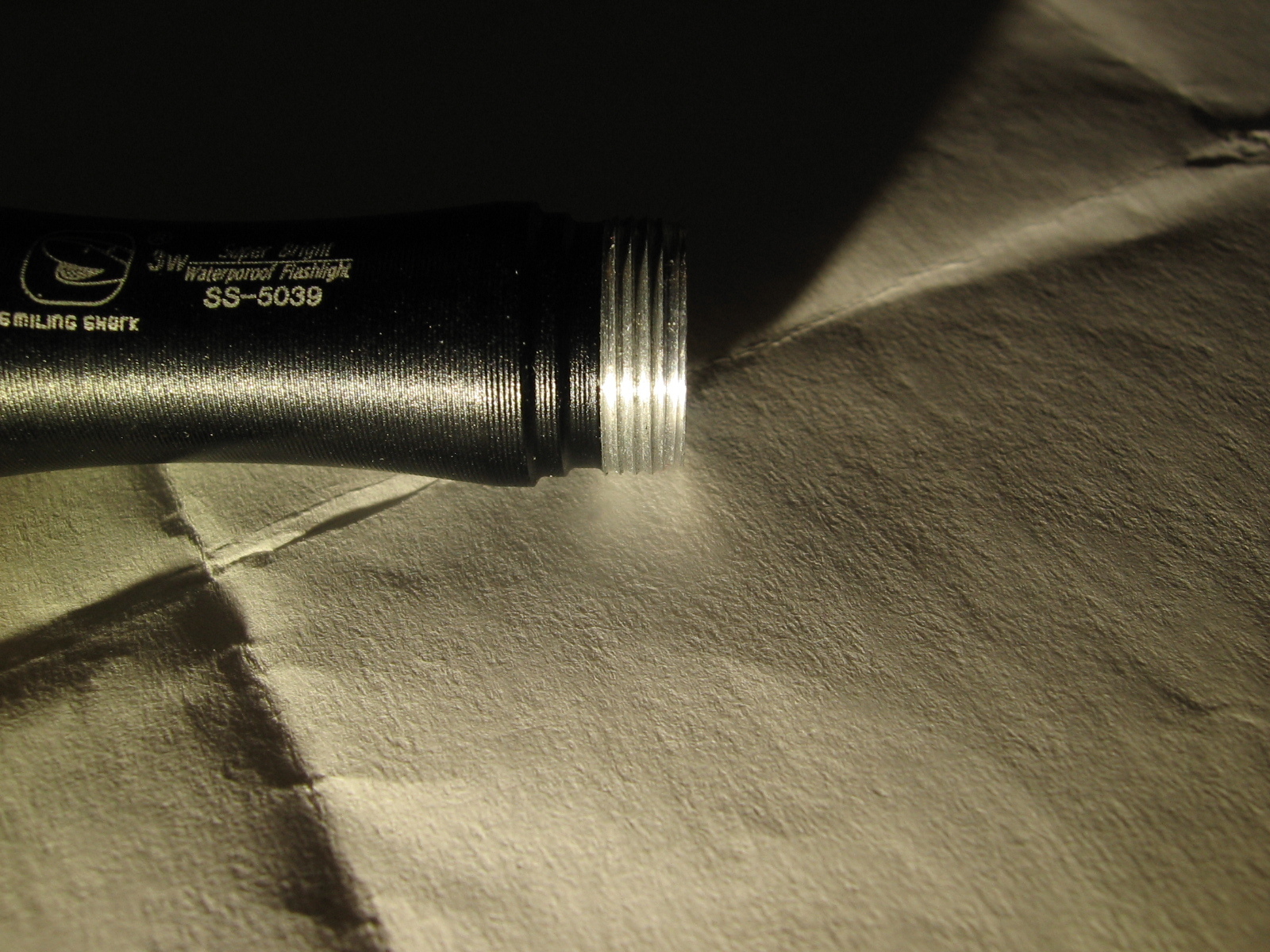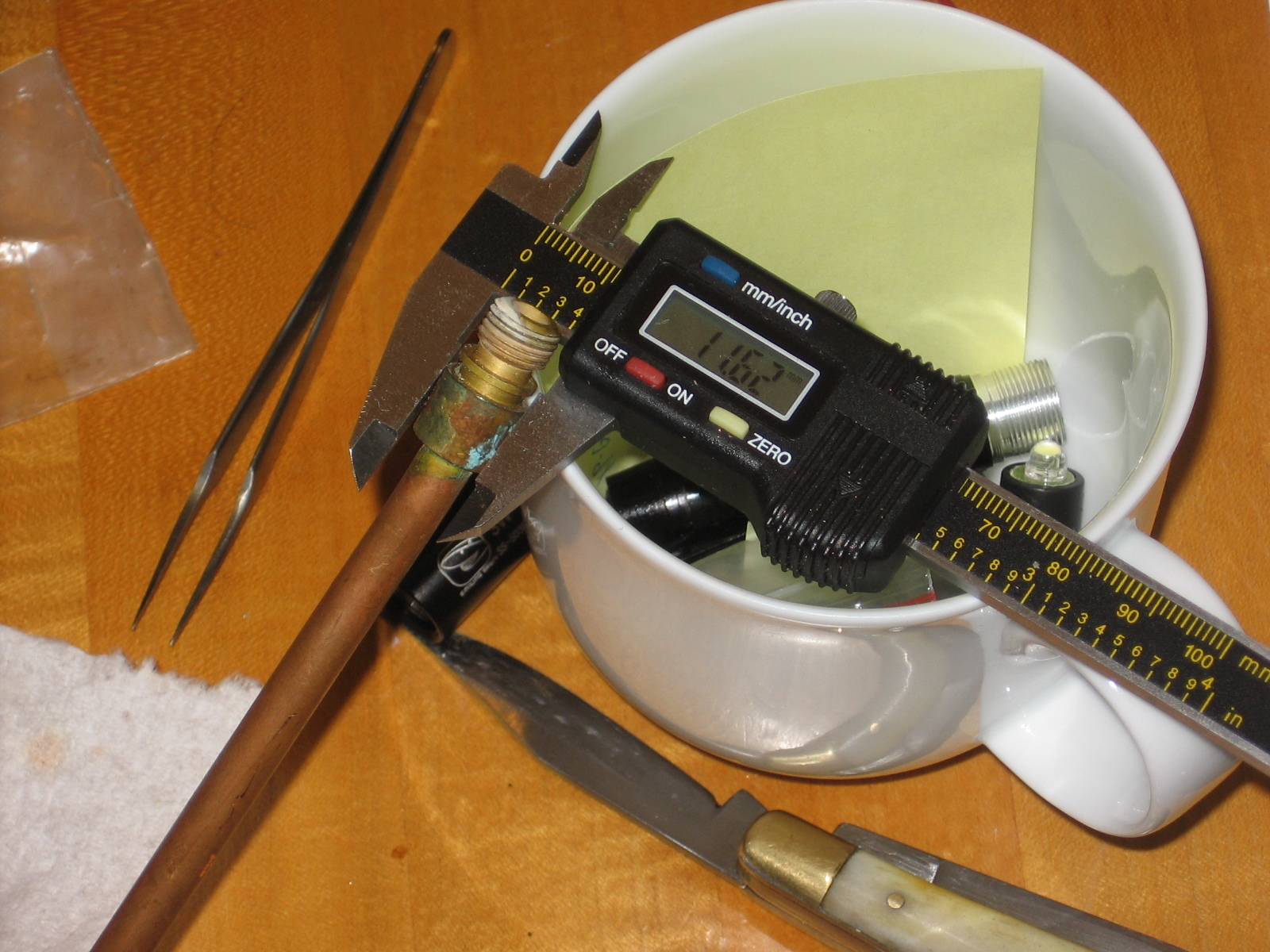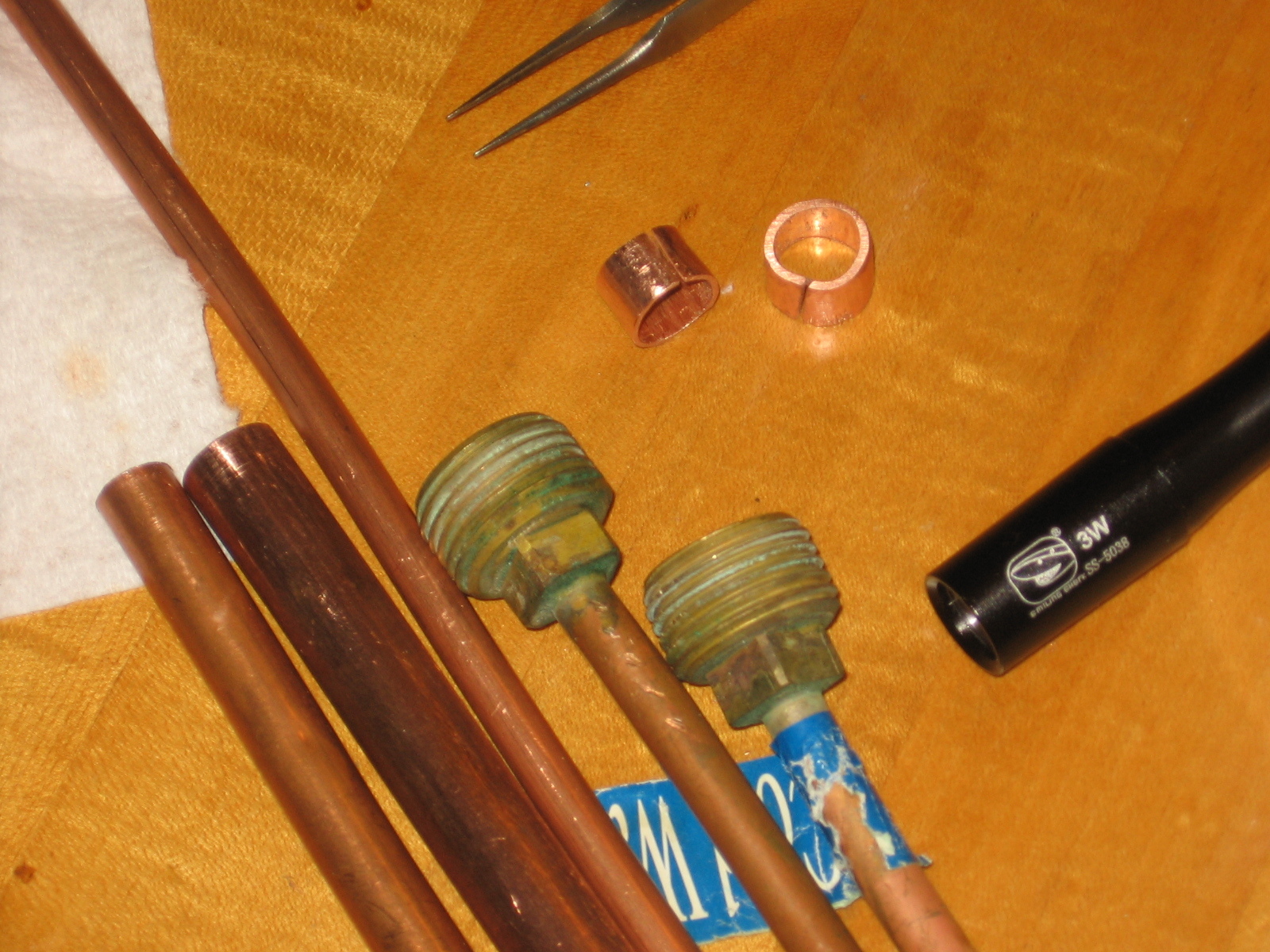
It is hollow, but with a thick copper star I don’t think it will be worth the time to fill it with copper wire and solder and drill wire holes. This is the thicker “L, outdoor” tube they had.
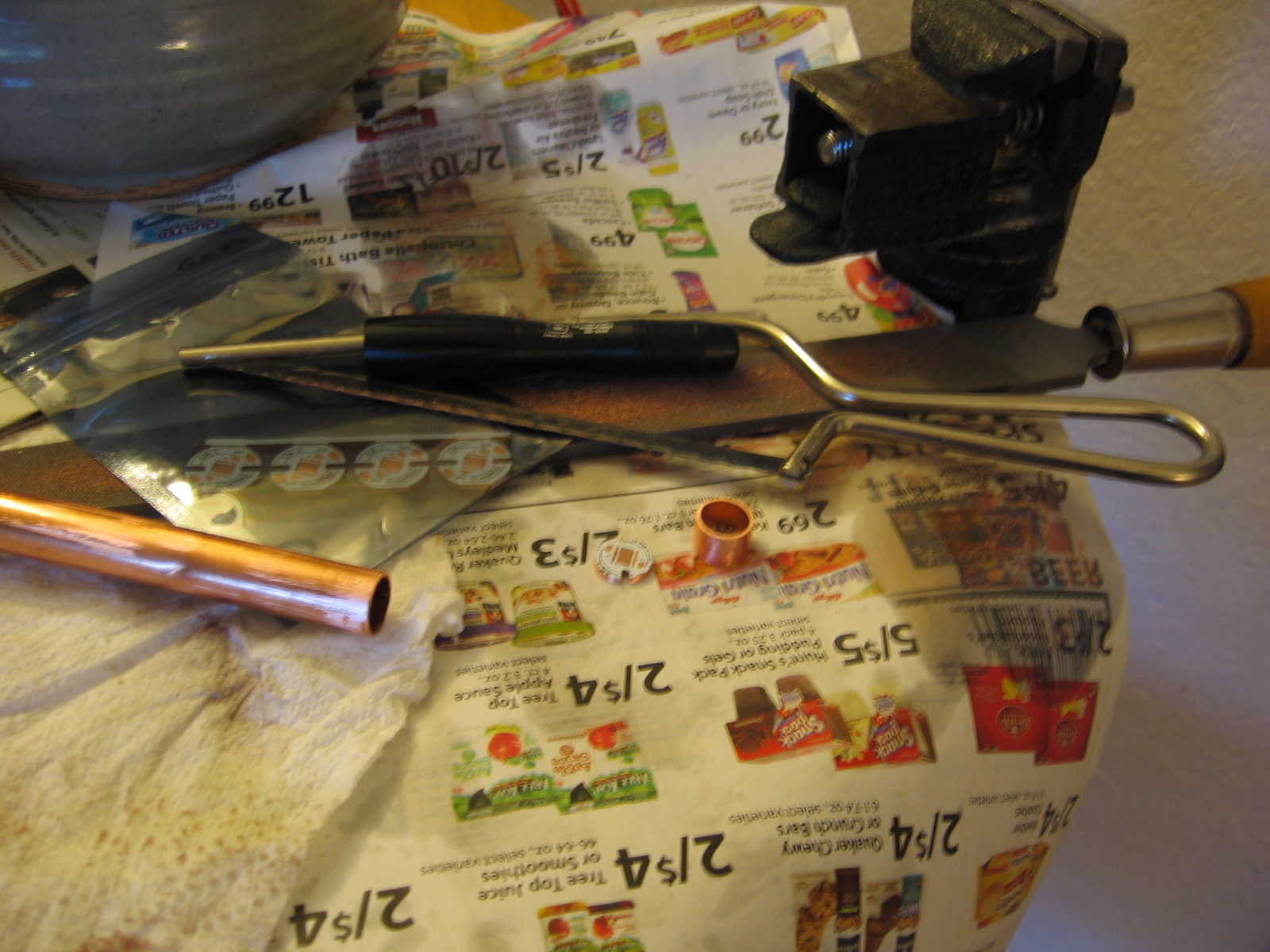

No attempt to fit the reflector to the flatter led yet.
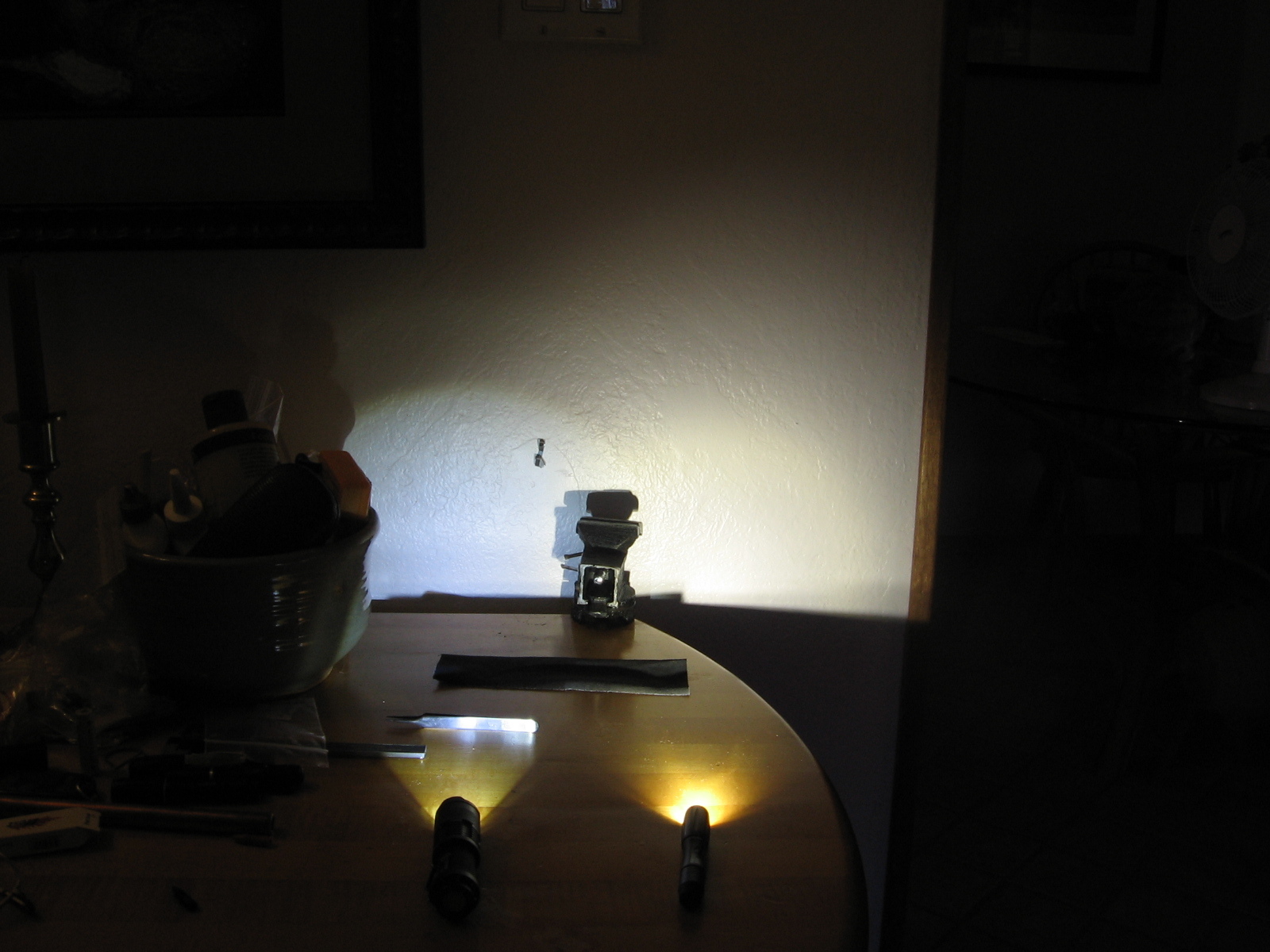
Metal conductors as resisters have the advantage that the resistance increases with temperature.
That was with Li ions in both. The Efest in the 5039 was charged to about 3.8 V.
It ran for about 8 minutes, to much reduced light at 3.0 V. Warm but not really too hot to hold.

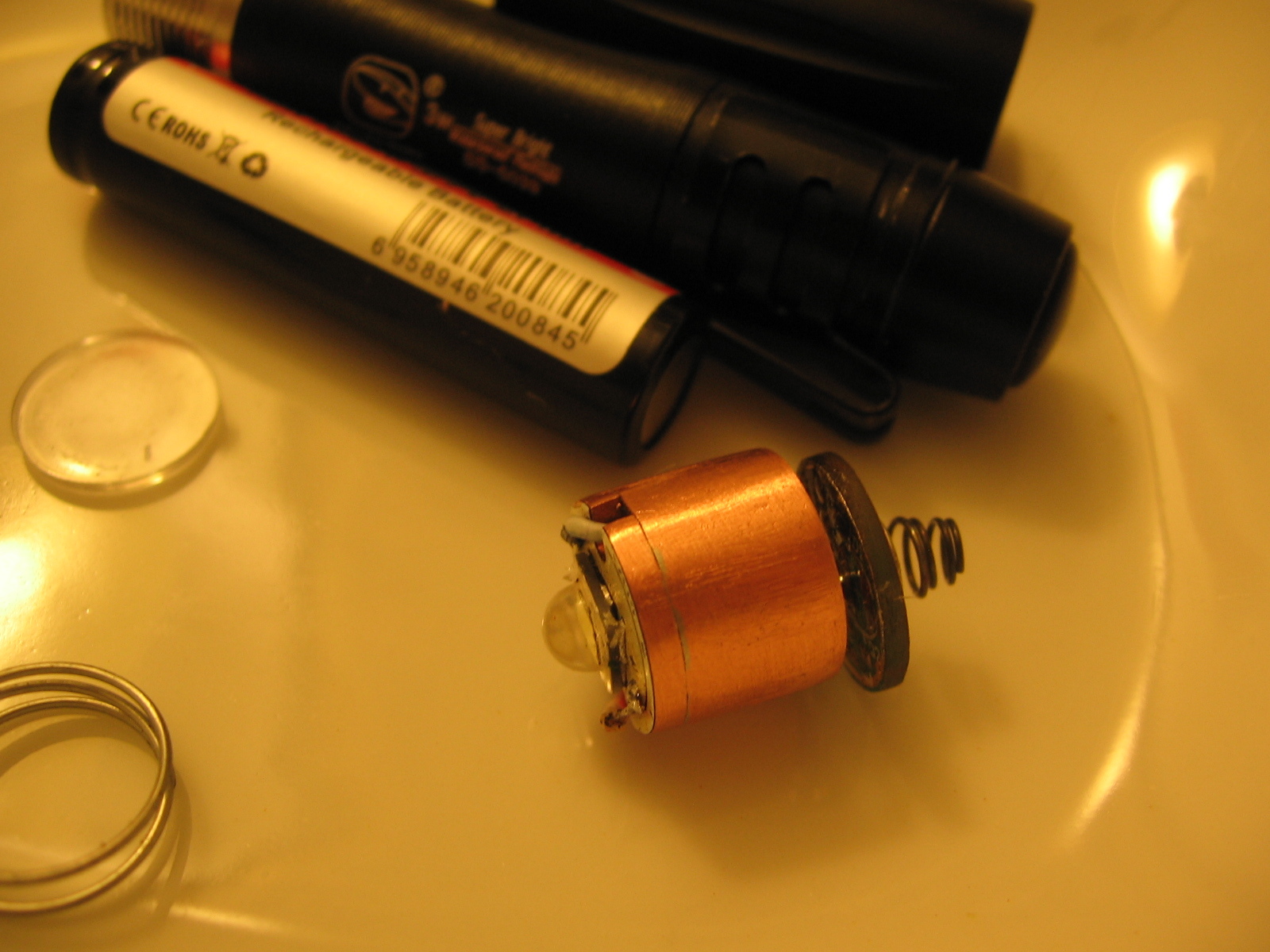
Charged to 4.21 V, I get 2.4 A, which is as much as most of my 18650 lights draw, dropping off at a rate that is in inverse proportion to battery size. This is with both the original springs in the head, some Nanjg 102 circuit traces and the original pill wires. I don’t know whether the tail cap resistance is more or less than that of the multimeter and leads.
Because the SinkPAD does not fit an XP-G, it has an XM-L2 T6 4D. So one can’t expect much but pure flood.
The Smiling Shark SS-5038 is similar to the 5039 except for a shorter narrower cylindrical head and a thicker walled wider body and tail cap. To get a smaller light, I filed the front threads on a 5039 body shorter to fit a 5038 head. Head and tail threads of both are all interchangeable, except for length. I also filed the plastic pill shorter to allow more battery space.
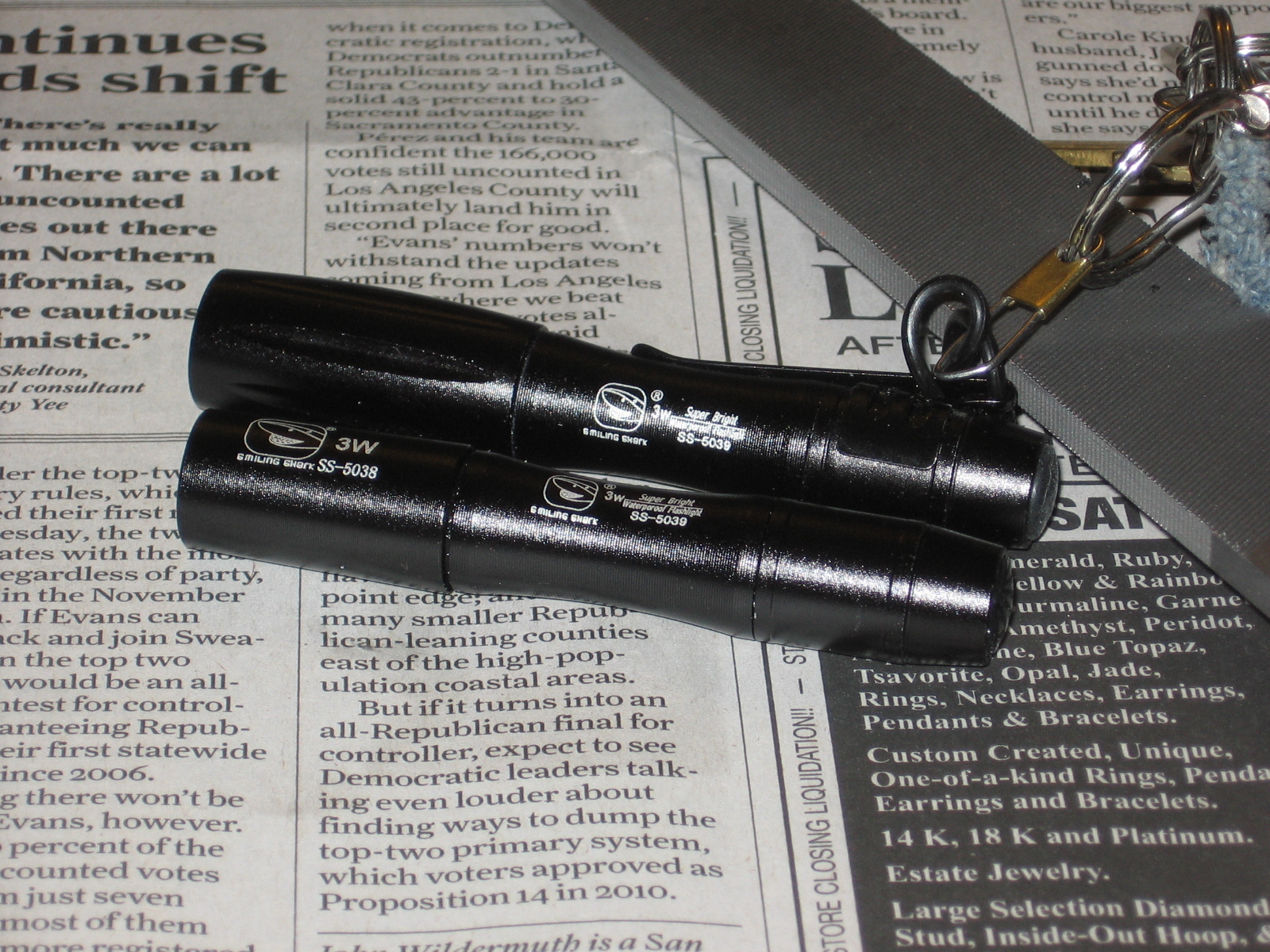
The 5038 has the same nice finish as the 5039. The hybrid is still thicker than a MagLight Solitaire, but not by much.
Later:
Here is what it ended up with.

The copper pill is split, the easier way to make it fit the head. That is an Osram left over from an SK-58 that I modified.
I hope my beam shots have answered that question.
The tail is also shortened now. Still original works.
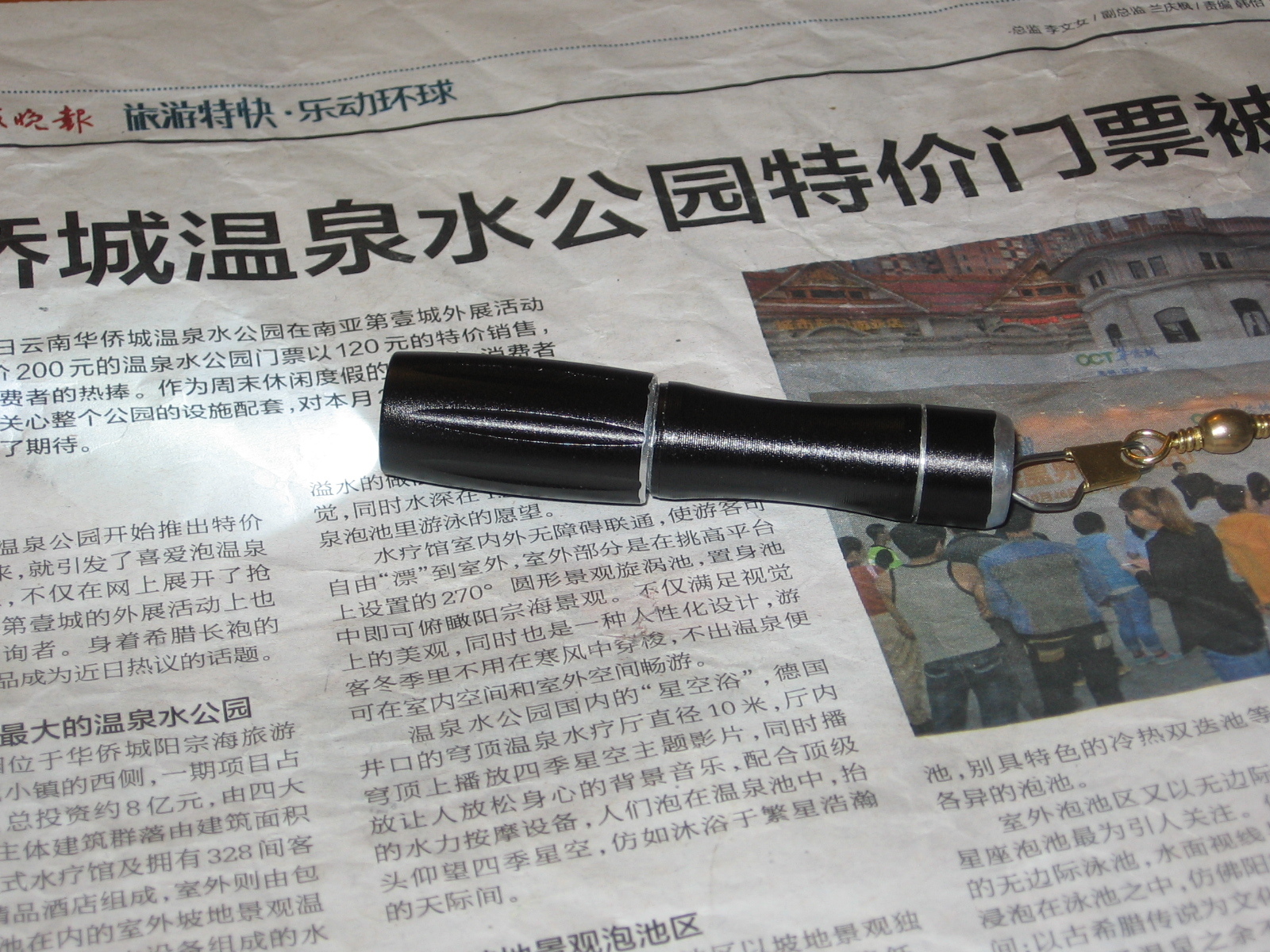
Only the tail cap is 5038. With the ridge filed off, it continues the 4039 body. There is still enough thread to make the head shorter. The switch is replaced with a thin brass sheet and a bit of sterling silver wire for a key ring eye, left from a jewelery making class.
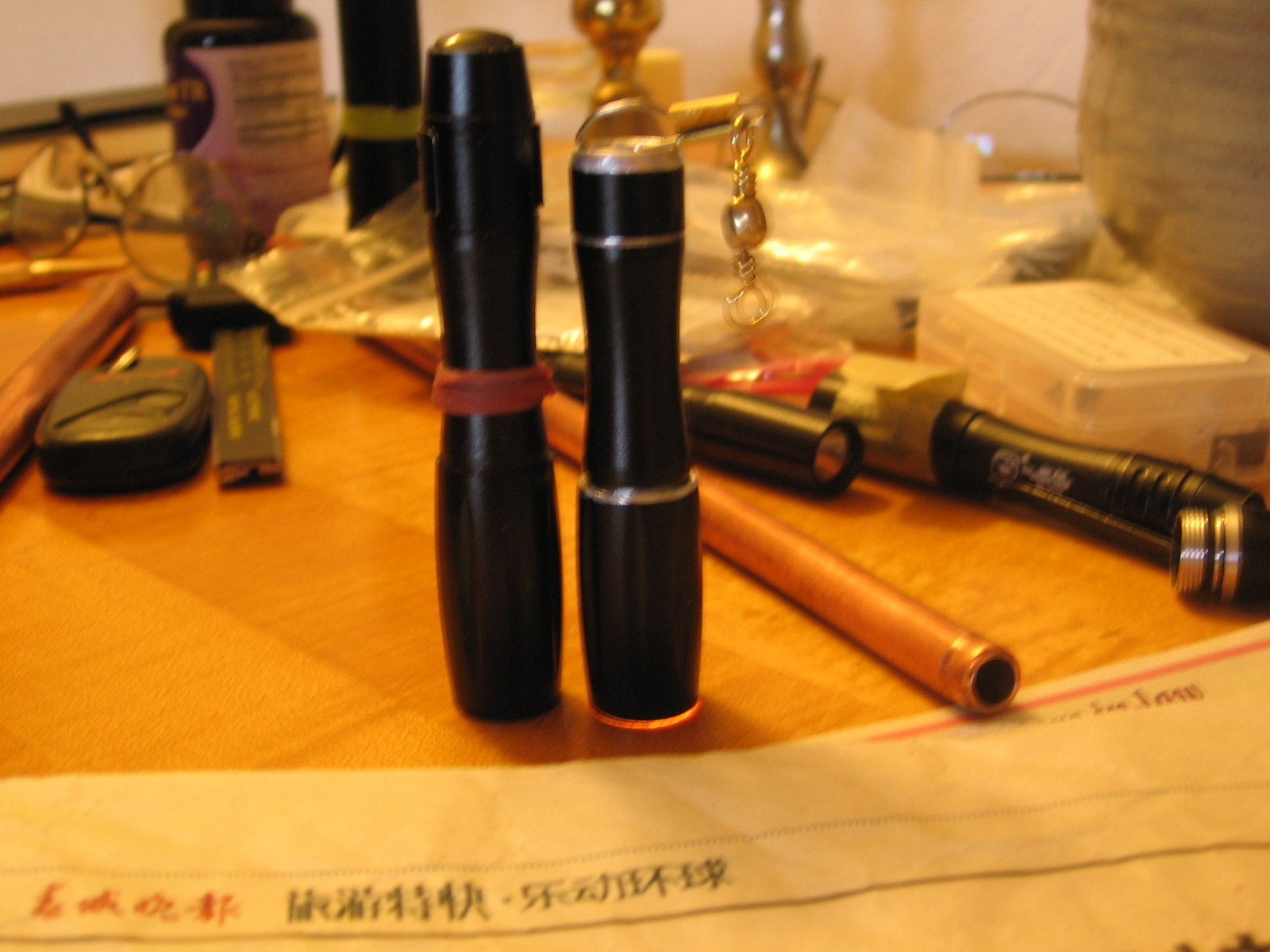
I might have used the 5038 works, without a spring and a spring on the tail plate, but I don’t have an acetylene torch to melt the jewelry solder, and it is hard to solder things on both sides of a good heat conductor with the same solder.
Later: This ended up direct drive with only one small spring. The twisty switch has taken some time. I have not run it at 4.2 V.
> acetylene torch to melt the jewelry solder
What temperature do you need?
My jewelery class teacher was not mathematically inclined. I put some on the brass plate and put my propane torch to it, and it didn’t melt as it did with the acetylene/air torches we used in class. I think the alloy is mostly silver and zinc. It works nicely for jewelery because the zinc, which lowers the melting point, oxidizes or evaporates or something, so the previous solder tends not to melt when you solder on something else.
For the key ring eye, it might have been stronger than tin lead solder. It is also available in various melting points.
It should not be confused with ordinary “silver solder” which probably has no silver in it.
I got it to go with only one original spring and thicker wires. (That spring is now collapsed.) It read 2.4 A with a 4.0 volt cell. It has multiple problems about the screw lengths and especially about the (x) driver board (I think) having too many conducting edges. It worked long enough to prove the concept, but is not on my key ring.
The jewel thief driver boards have more connections than are actually used for the two components. They are cut down from a board for a bigger and more complicated driver. There are half vias around the edge for connecting the bottom outer negative ring with a top outer ring that has been cut off. These may be one of the problems with the twisty. They come off with a triangle file.
I think you’re talking about jewelry “hard silver” brazing — that comes in several different temperature melting points so you can assemble something out of several different pieces, by using lower-melting silver braze for each successive joint.
This is a useful discussion thread; points out the temperature range you need (much lower than what oxy-acetylene produces):
Here are some, I don’t know this supplier but it seems to have a wide temperature range:
Welding Supplies | Linde Gas & Equipment Inc - formerly Praxair*
This torch is often used with it — it’s oxygen + propane (I’ve had one for decades): http://www.smithequipment.com/files/pdf/spec_sheets/Little_Torch.pdf
Thanks. As I said, what I have melts with air/acetylene and not with air/propane. I could use some that does melt with air/propane but hotter than the 60/40 solder I have. I could have used that today on my second direct drive conversion, but what I really lack is practice. I have done welding, but oxygen/propane would be too hot for the sort of things I am doing. I don’t think I want to buy anything else at this point, as I have put out enough for leds, stars etc.
The shortened one is working now. With an SP-G2 it has a bit more throw.

It draws 2 amps. charged to 3.8 V, with only one short spring and 22 gauge wires. It has a 10 mm. aluminum star, so I don’t trust it long with 4.2 V.
Cree XP-G2, 10mm Round MCPCB, R5, 3D Tint (5000K) from Illumination Supply.


There is a smaller inner copper tube bent and soldered to the outer one.

Nice mod. I don't know why I have a soft spot for these cheapo lights. This one reminds me a bit internally of the "Police" lights I modded, but threaded head and nice texture on the body.
Does the pill, reflector, lens come out the front of the light?
I'm kind of confused by the various links towards the beginning of the thread. What is the best source for this light with the interesting tube texture?
The window (lens), plastic reflector and plastic pill with fiberglass star and driver can be pushed out the back of the head by pushing on the window. I use an AAA cell.
I have been getting them from Banggood, as that is the cheapest I have found them. The 5038s are from http://www.shenzhen-wholesale.com, which is an odd site that tells you how much the shipping will cost by emailing you after you place the order. BangGood has them cheaper also, though.
One that I was carrying on my keychain for a while shows slight traces of silver color on its edges. So far, I have been able to remove and replace the clips without scratching the anodizing.
At 4.1 V charge, I read 2.9 A at the tail. Probably more without the multimeter leads.
I also am carrying a soft steel knife that needs sharpening frequently.
I am seeing what appears to be thermal droop when it is fully charged. This one is not direct copper.
Checking my history with them, Banggood sometimes sends an email confirming an order and sometimes one notifying one of a shipment, or sometimes both or none. The orders history at the web site appears to be complete.
Thanks Fritz. Gonna get me one from BG.
The SS-5039 is listed with a picture on http://en.cnsmilingshark.com so it appears to be legitimate, except that the size listed is impossible with an AAA cell.
